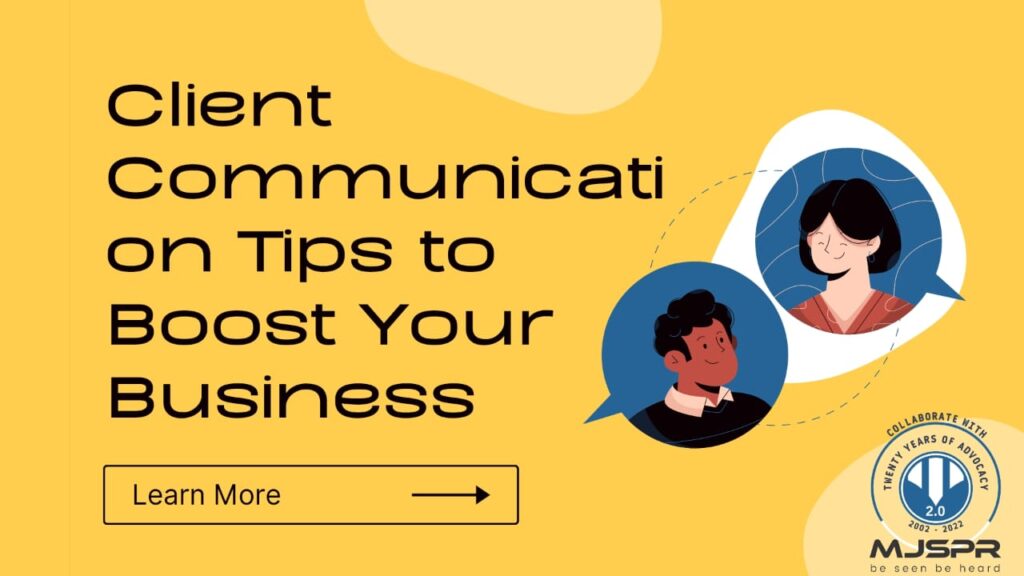We are in the communications business and we often hear stories of customer communication failures. Being a successful PR professional requires more than just speaking effectively in front of your target audience. The same skills should be applied to internal and external customers.
How much time do you spend when starting a new job or working with a new client?
• Is messaging a hassle?
• Do you create content with clear calls to action?
• Develop a consistent and clear communication strategy?
So how much time do you spend thinking the same about your internal or external customers?
Client communication should not be an afterthought. It should be a top priority from the first interaction.
Creating Customer Personas
Every customer is different because everyone is different. Like consumers, certain tendencies (problems, needs, desires) may go beyond all customers, but each one is unique.
Just as you create a separate communication strategy for each product or service you promote, you should do the same for communicating with your customers. Need your own client persona. Last week we covered 11 questions we ask our clients. These questions help us understand who the client is as a person and as a professional. This is a good place to start building your customer personas.
In addition, every interaction with a customer should be viewed as an opportunity to find out who the customer is and how they think. If you get this right, the longer you work with them, the more united and the better the relationship.
Communicating With Customers Requires an Entire Team
Most of the time there are one or two major criteria, it is the primary point of contact with a customer. Often the team has a person who runs the account and is the point of contact for customers while other team members interact with them on a regular basis. This person is naturally more in tune with the client and their individual needs and styles.
It is very important not to keep this as exclusive information. The person is responsible for keeping the rest of the team informed, not only on the business side of the account and customer interactions but also on the personal side. This is within reasonable limits and there may be information that must be kept confidential.
However, in most cases, the client manager has to communicate not only tasks and needs but also personal and interpersonal information. Staff In her meetings, she has time to update the
entire team on all aspects of the customer’s account for each contact with the customer. This includes what the client is struggling with, concerns and fears they have, and even internal organizational issues they may be struggling with. This information will help us.
Teams can be on the same page when executing strategies or helping clients with disabilities. Allow individuals to intervene when leads are away from the office.
Coordinating Style to Maximize Efficiency
Things may have processes. And it’s great. A meeting can be held in a certain way. Or tag documents with specific processes. There may be a project management protocol that works best for you.
And under no circumstances should you give up on the process and “reinvent” the wheel for each customer. However, you need to make sure your process is effectively integrated with theirs. Otherwise, you might end up missing the point.
The most effective process in the world is only if it works for both parties. Allow some flexibility in how you do things.
For example, we have customers who are very careful about how their documents are labeled. It’s kind of silly, but they go nuts when the documents aren’t labeled the way they want. We work within this system.
Similarly, we typically use Zoom for video conferencing, but some clients prefer Google Meet. We adjust! Effective customer communication involves understanding which parts of the process are important and which can be adjusted.
Communication Rules Still Apply
Suppose you want to communicate something to a consumer. what would you do? Most of the time it follows a pattern like this:
Here is the major point that one needs to make or emphasize on:
Pretty typical, right? However, this is a basic communication process and it is often ignored during customer communication. PR expert gets on a call.
• And you struggle in providing the information necessary for coherent discussion.
• The client jumps into new topics without understanding the purpose or what to do.
The client hangs up not really sure what’s going on, why, what to do, or what the PR team is doing. Not the best strategy for a successful customer partnership or satisfying customers. This is just an example. You can do this in many ways.
In general, try to apply the same rules to your customer communications that you apply to your marketing communications.
Customer communication is essential to success
It’s as important as everything else you do as part of your job. In fact, I would argue that this is the most important type of communication you do as a PR professional. If you acquire expertise, your relationships will deepen.

